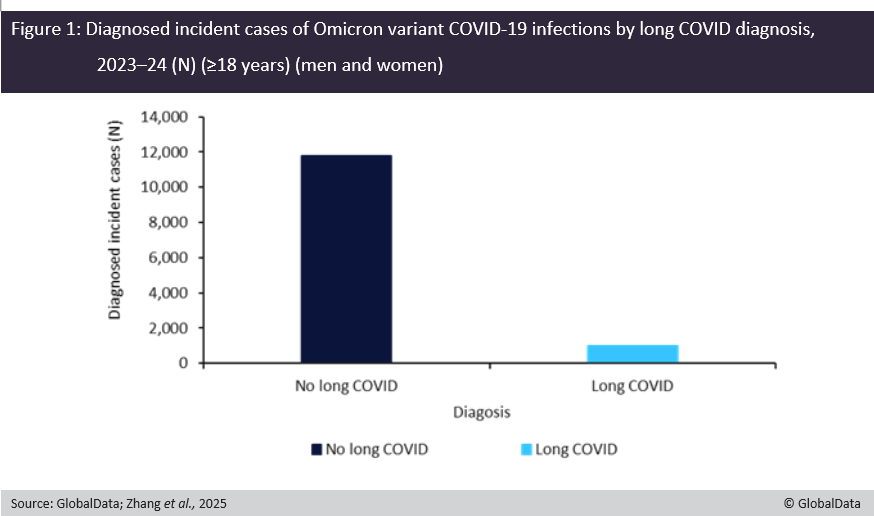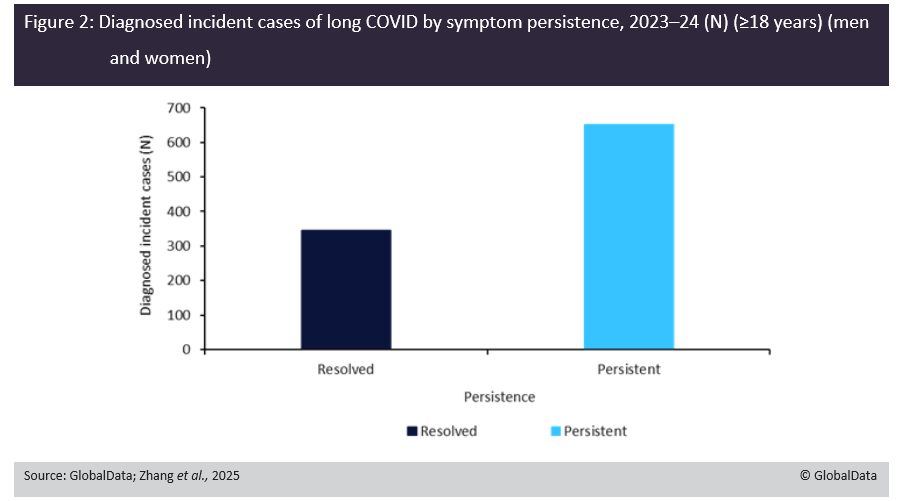Among the myriad strains of Covid-19 infection that have emerged since the outset of the pandemic, variants branching from the Omicron lineage have remained highly infectious while frequently inducing relatively mild symptoms. However, Omicron, like other dominant strains of the coronavirus, may lead to a set of chronic post-infection symptoms commonly referred to as “long Covid” – a health condition characterised by malaise, muscle pain and weakness, and reduced physical stamina.
In a large-scale exploration of the clinical progress of long Covid patients who were previously infected by the Omicron variant, Zhang and colleagues analysed various measures of the condition’s severity and length in Beijing, China. GlobalData’s Covid-19 dashboard estimates that there have been more than 29,400,000 confirmed cases of Covid-19 in China as of 19 March 2025, 7% of which were caused by infection from the Omicron variant. While long Covid remains poorly understood, long-term follow-up studies such as the one conducted by Zhang and colleagues play an integral role in establishing a robust epidemiological and clinical framework for its management.
995 study participants experienced long Covid and 651 had persistent symptoms
Zhang and colleagues performed a cross-sectional analysis of 12,789 adults aged 18 years and older who resided throughout the Beijing metropolitan area between December 2022 and March 2024. All participants had received a positive antigen or polymerase chain reaction (PCR) test for Covid between December 2022 and January 2023. All participants were assumed to have suffered from infection caused by the Omicron subvariant due to its peak circulation during this period. To test for the presence of long Covid, the authors carried out a battery of tests for physical strength and health, quality of life, organ function and mental health, which in aggregate yielded propensity scores for a positive or negative persistent long Covid diagnosis.
As displayed in Figure 1 below, 995 participants (7.8%) experienced long Covid, and 651 long Covid patients exhibited persistent symptoms one year after their initial infection (Figure 2). These persistent long Covid patients displayed a higher risk of experiencing a variety of symptoms of mental and physical distress, including reduced lower-limb strength, higher rates of anxiety and depression, reduced mobility and higher rates of pain and discomfort. Accordingly, these patients reported higher rates of healthcare utilisation and higher rates of economic strife than patients without persistent long Covid. The authors emphasised the need for further investigation of the clinical course of long Covid, particularly the biological mechanisms through which symptoms emerge, persist and resolve.
Zhang and colleagues presented a compelling picture of long Covid’s clinical sequelae following infection with the Omicron variant. Even one year following infection, a significant proportion of patients exhibited persistent long Covid symptoms, indicating a need for a more nuanced understanding of the condition’s pathophysiology and treatment. The study also highlighted the need for a more expansive conception of Covid beyond acute infection. This endeavour could be carried out in various ways, such as more intensive follow-up from healthcare workers paying attention to flags for long Covid, as well as the inclusion of the condition in epidemiological record keeping and pandemic data analysis. Health authorities paying more attention to long Covid through these and other efforts could lead to more nuanced and effective treatments for patients whose symptoms have been largely misunderstood since the outset of the pandemic.



US Tariffs are shifting - will you react or anticipate?
Don’t let policy changes catch you off guard. Stay proactive with real-time data and expert analysis.
By GlobalData


